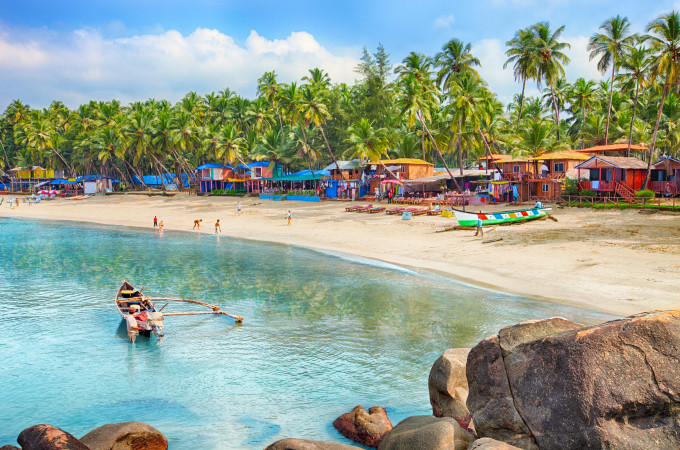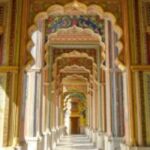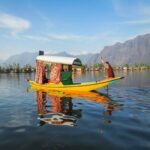It is springtime in March in India —the happiest time of the year in the country.
By March, winter is over in all of India, and the average temperature in the country fluctuates between a low of 73 °F (23 °C) at night and a peak of 91°F (33 °C) during day time. It is a dry month, so rain does not hamper outdoor travel.
It is a time of joy and celebration with many events and festivals taking place like Holi, the International Yoga Festival in Rishikesh, the Jaipur Elephant Festival, the Arattu Festival in Kerala, the Shigmatsu (spring) Festival in Goa, and Hoysala (music and dance) festival in Karnataka.
The average rainfall in march is very low, around 28 mm (1 inch), March sees only 2 to 3 days of rain in India, and 28-29 sunny days.
Read on to learn more about the weather in India in march.
1. Regional Weather Breakdown
It is festivals and carnivals galore in India in the month of March. Here is a breakdown of the weather patterns in various parts of India during the month.
North India: Rajasthan & Golden Triangle
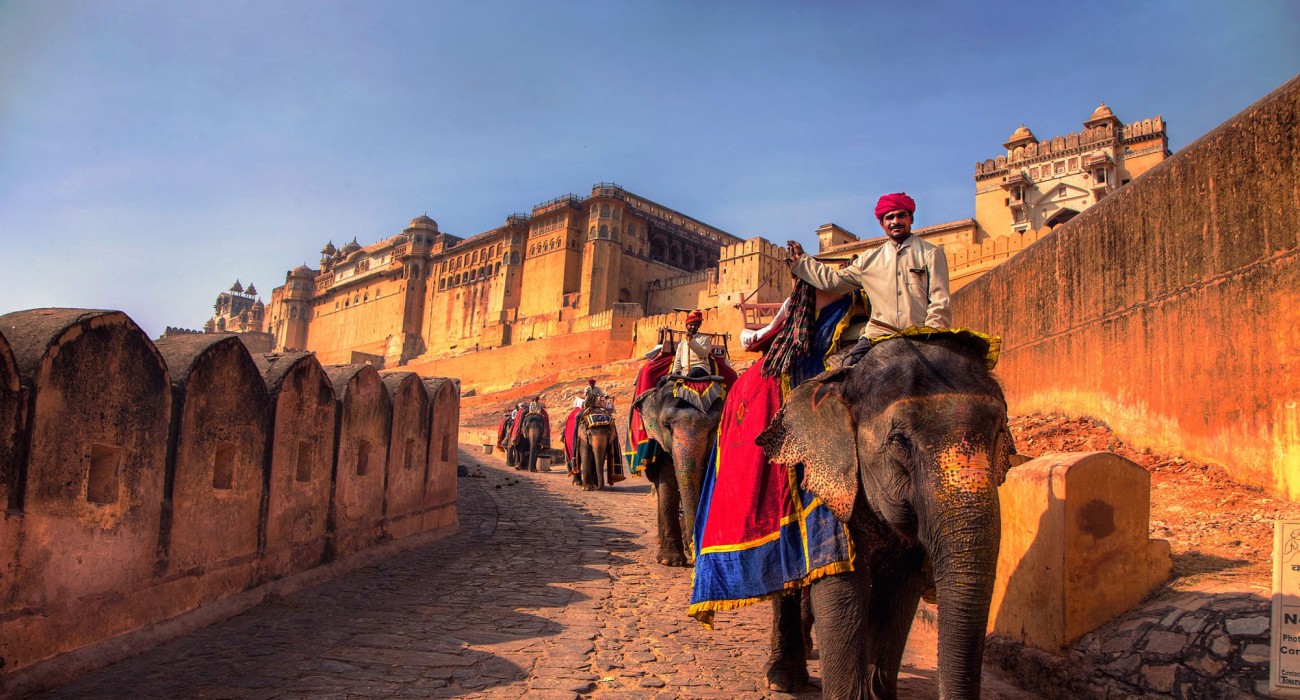
March is the last month of the peak tourist season in the North of India. Key tourist destinations of the region are the Golden Triangle: (Agra, Jaipur, Delhi) along with Varanasi, Amritsar, Jodhpur and Udaipur.
In March, Udaipur is a good place to enjoy Holi (the Festival of Colors), Jaipur is a good place to enjoy the Elephant Festival, and the Taj Mahal shimmers brightly in the March sun.
Average Temperature in Delhi in March: 60 °F- 86°F (16°C – 30°C)
Average Temperature in Jaipur in March: 60 °F- 89°F (16°C – 32°C)
Average Temperature in Agra in March: 59 °F- 89°F (15°C – 32°C)
North India: Kashmir & Himalayas

The Himalayas are chilly, and frosty for most of the year but by March the temperatures begin to drop down, and the mercury rises well above freezing point.
In Kashmir, known for its scenic Dal Lakes and beautiful valleys, the temperature hovers around 45 °F – 59 °F (7 °C – 15 °C). Not a bad time to stroll in the Mughal Gardens or take a shikara (Gondola/traditional wooden boat) ride in Dal Lake.
Uttarakhand hosts the International Yoga Festival in the holy city of Rishikesh on the banks of the Ganges, attracting devotees and peace-seekers from all over the world (average temperature 48 °F – 73 °F (9 °C – 23 °C).
South India: Kerala, Goa & the South

With an average sunshine of about 9-10 hours, Goa is a delight in March (mercury peaks at 89 °F (32 °C). The sun is bright, the Arabian Sea is calm. You can just lay down on the beach and enjoy a relaxing time, go on a boat or yacht tour into the ocean, or enjoy the beach party and nightlife scene of this tropical paradise.
Kerala sees a maximum of 90 °F (32.5 C) during this month but is quite bearable with the lush nature and water bodies.It is the perfect temperature for the backwaters houseboat cruise (day or overnight), If you’re a mountain person, you may can consider the hill stations like Munnar (Kerala) Ooty & Coonoor (Tamil Nadu) and Karnataka (Coorg, Chikmagalur), where you can have an opportunity to go on tea/coffee plantation treks.
West & Central India: Mumbai & Other Central Parts

March is a great time for Tiger safaris as it starts to get warmer and the Big Cats come out in search of water. Central India has three of the best Tiger Reserves in India (Kanha, Panha, and Pench) which are home to the Royal Bengal Tigers and other magnificent flora and flora.
The historical city of Bhopal has it’s noble heritage and would be a great for historical immersion. If you love ancient forts, consider a visit to the magnificent Gwalior Fort.
Average temperature in the region: 66 °F -91 °F (19 °C- 33 °C)
2. Weather Information on Popular Cities For Tourism
Agra

Average Temperature in Agra in March: 59 °F- 89°F (15°C – 32°C)
In addition to the Taj Mahal and other UNESCO sites, Agra can also be a good place for Holi celebration
What to wear: Light linen shirts/T-shorts & a pair of shorts/trousers, sun-screen lotion for outdoor sightseeing, evenings are pleasant, no woolens required.
Jaipur
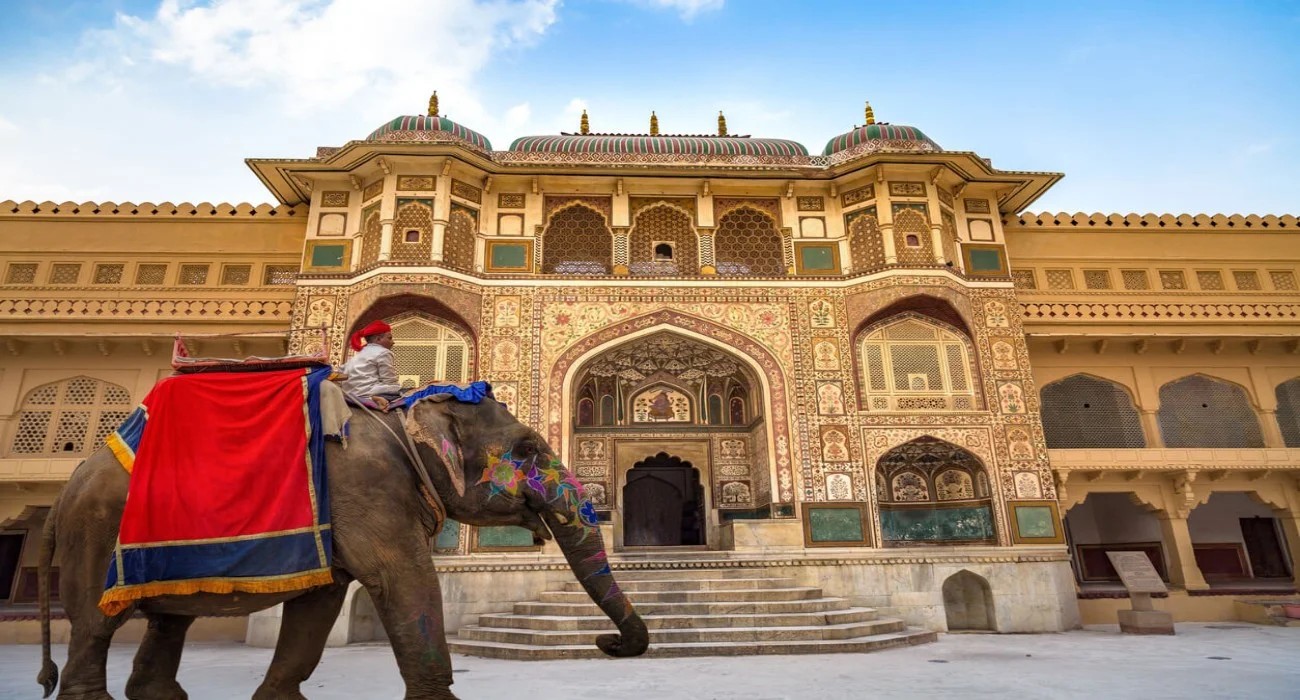
Average Temperature in Jaipur in January: 60 °F- 89°F (16°C – 32°C).
Jaipur being closer to the desert has semi-arid conditions. March is generally quite dry with bright sunlight. It is the transition month from spring to the summers and is the fag end of the pleasant weather condition in the region before the heat starts to set in April onwards.
The Elephant Festival & the Holi celebrations along with the grand monuments & palaces are the top tourist attraction of Jaipur.
What to wear: A light T-shirt and a pair of trousers, some sunblock for peak sunlight, and a cap/hat.
Delhi

Average Temperature in Delhi in January: 60 °F- 86°F (16°C – 30°C).
Delhi and Agra are generally very similar in terms of weather: the skies are very clear, the days see bright sunshine, and it is pleasant for outdoor sightseeing/activities.
What to wear: light casual clothing, cotton tee’s and light trousers/shorts.
Mumbai

Mumbai is generally more hot and humid than the North. But the breeze from the sea brings delightful relief.
Average Temperature in Mumbai in January: 69 °F- 91°F (21°C – 33°C).
What to wear: A pair of jeans/shorts, and light fabric shirts/T-shirts would do.
FREQUENTLY ASKED QUESTIONS
Is March a good time to visit India?
Yes, March is a great time to visit India. It is the last month of the classified peak tourist season (November-March), and is therefore, a good time to get end of the season deals on airfare and accommodation.
March is a month of festivities in India, you can witness many religious and cultural festivals during this time. These include iconic festivals like Holi which is celebrated throughout India, and other regional festivals like the Elephant Festival in Jaipur, the Hoysala (Folk Music and Dance Carnival) Festival in Karnataka, and the Shigmatsu Festival in Goa.
Looking for recommendations for a trip to India? Take a look at our BEST PLACES TO VISIT IN INDIA IN MARCH resource here [link].
How hot is it in March in India?
Not really.
Maximum temperature rises up to 89 °F (32 °C), whereas, the minimum temperature on average is around 71 °F (22 °C) in February. The nights are cooler, but it is bright and sunny during the daytime.
Is March the rainy season in India?
The monsoon only arrives in different parts of India between end of May till June. March is still quite dry and there is hardly any rainfall around. So, if you are planning a India trip in March, rain is not something you should be fretting over.
Is March a cold month in India?
Winter officially ends in January. February and March are spring time in the north of India —a time of traditional festivals, carnivals, and religious events that mark new beginnings.
The coastal southern regions hardly see winters. At its coolest, southern India sees temperatures comparable to a pleasant summer day in Europe.
 Skip to main content
Skip to footer
Skip to main content
Skip to footer




